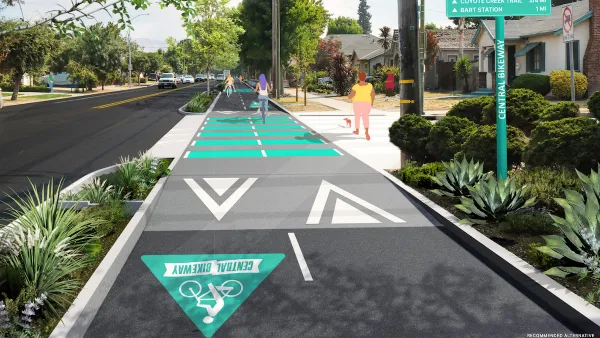The roots of the current U.S. transit crisis go deeper than the Covid-19 pandemic.

The ‘fiscal cliff’ facing many U.S. transit agencies, accelerated by drops in ridership and the end of pandemic-era assistance, is a sign of deeper, more structural problems, writes Daniel C. Vock in Route Fifty.
According to research from the Urban Institute, transit agencies need more diverse funding streams, rather than depending largely on one or two often volatile sources such as sales taxes and fare revenue. “Keeping a lid on operating costs has become even harder in the wake of the pandemic because of factors such as difficulty retaining drivers and higher material costs.”
The researchers have several recommendations for transit providers: “agencies can demonstrate that the public still wants robust transit service by, for example, creating rapid bus routes using dedicated lanes or redesigning their bus networks. They can look for a chance to redirect revenues from existing taxes, rather than pushing for raising new taxes. They can encourage dense development around their stations to promote future ridership and, in some cases, agency revenue. They could create and fill rainy day funds to smooth out future jolts to their revenue sources. And they could be ‘transparent about doomsday scenarios’ if they don’t receive more funding, with details about specific cuts that would result.”
FULL STORY: Looming ‘fiscal cliff’ shows deeper problems with transit funding, researchers say

Planetizen Federal Action Tracker
A weekly monitor of how Trump’s orders and actions are impacting planners and planning in America.

Silicon Valley ‘Bike Superhighway’ Awarded $14M State Grant
A Caltrans grant brings the 10-mile Central Bikeway project connecting Santa Clara and East San Jose closer to fruition.

Amtrak Cutting Jobs, Funding to High-Speed Rail
The agency plans to cut 10 percent of its workforce and has confirmed it will not fund new high-speed rail projects.

California Set to Increase Electric Truck Chargers by 25%
The California Transportation Commission approved funding for an additional 500 charging ports for electric trucks along some of the state’s busiest freight corridors.

21 Climate Resilience Projects Cancelled by the EPA
The federal government has pulled funding for at least 21 projects related to farming, food systems, and environmental justice to comply with one of Trump’s early executive orders.

Trump Executive Order on Homelessness Calls for Forced Institutionalization
The order seeks to remove legal precedents and consent decrees that prevent cities from moving unhoused people from the street to treatment centers.
Urban Design for Planners 1: Software Tools
This six-course series explores essential urban design concepts using open source software and equips planners with the tools they need to participate fully in the urban design process.
Planning for Universal Design
Learn the tools for implementing Universal Design in planning regulations.
Yukon Government
Caltrans
New Jersey Institute of Technology
Mpact (founded as Rail~Volution)
City of Camden Redevelopment Agency
City of Norman, Oklahoma
City of Portland
City of Laramie





























